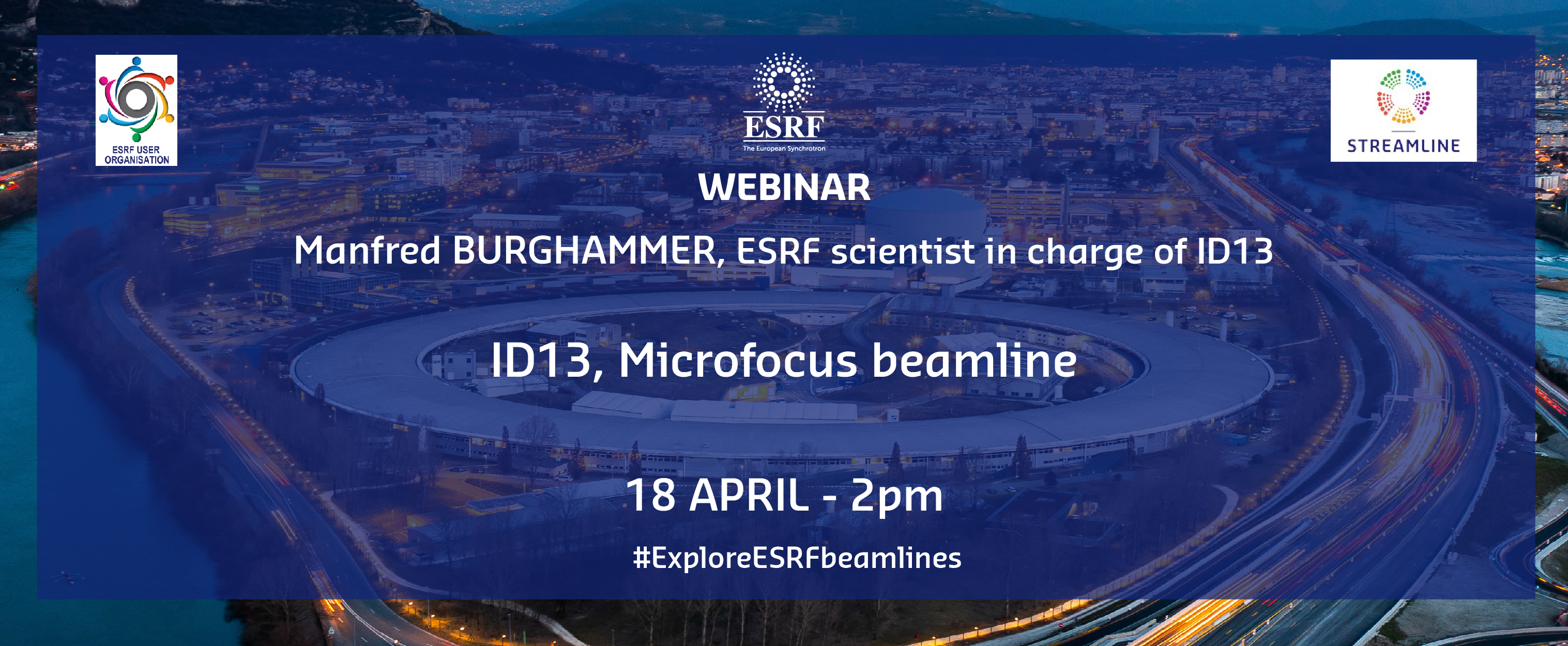EXPLORE ESRF BEAMLINES ID13 Microfocus beamline -Manfred Burghammer
 ID13 Microfocus beamline Manfred Burghammer
ID13 Microfocus beamline Manfred Burghammer
ABSTRACT
Since the early beginnings of the ESRF the "Microfocus Beamline" (ID13/ESRF) is dedicated to scanning diffraction and scattering experiments using highly focused monochromatic X-ray beams to obtain structural information at high spatial resolution. Today two experimental hutches, microbranch and nanobranch, are operated in time-sharing mode. Fast scanning methods with sampling rates up to a few kHz using high sensitivity, high frame rate pixel array detectors allow to record square millimeter sized field of views with few micron resolution using the beamline's microbranch. At the nanobranch, similar fast two-dimensional scans with typical spatial increments of 50 nm to 200 nm can be performed. With the upgraded source of ESRF-EBS the flux density in the focus has increased by up to two orders of magnitude allowing to match the performance of fast continuous scans ("fly-scans") accessible implemented in the the BLISS instrument control system. The X-ray diffraction patterns obtained from each sampling point offer very rich local information on texture, phase composition (e.g. crystalline phases and amorphous/disordered phases), particle size, small-angle scattering contrasts, etc. As these parameters can be selectively (e.g. regarding radial Q-value and azimuthal position of features in the pattern) extracted from large scale datasets of two-dimensional diffraction patterns, a quasi multi-modal set of high resolution raster scanning micrographs is produced from each scan. These maps can have high statistical relevance owed to the large number of sampling points turning diffraction experiments into a real space imaging technique. Optionally, these experiments can be employed for in-situ or operando experiments using sample environments such as electrochemical cells, heating stages, mechanical testing devices, and humidity control. Complementary information on the chemical composition can be obtained when acquiring X-ray fluorescence data and micro-diffraction data simultaneously.
The high versatility offered by this experimental technique allows to address a broad spectrum of topics in applied research and fundamental science. In terms of sample systems this spectrum is ranging from biomaterials/biological tissues and biominerals, cultural-heritage samples, to sustainable energy materials, hard coatings, and others.



